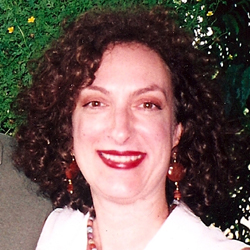
There’s quite an international crowd here at the first conference on computational sustainability — Australians, French, and two Dutchmen who had just come from the E-biosphere ’09 conference held a week ago in London. They were this morning’s first speakers. Said Wouter Los of the University of Amsterdam and LifeWatch, "We decided we need outreach to the U.S., so synergy is in the air."
His countryman, Eric Pauwels of Centrum Wiskunde and Informatica, offered examples of computer-assisted photo-identification of animals. Pauwels described a University of Amsterdam project that used GPS devices to track seagulls all over Europe so that we know exactly what a day in the life of these birds is like: At 7:15 a.m. Gull #52, a female, left her nest of two eggs, found food on the beach and returned at 8:20, then she fed the kids, at 10:15 she flew off to the mud flats, returned to the nest again, then took off for lunch without the kids.
But GPS devices are expensive and stressful for wildlife. So Pauwels’ group has been studying dolphins, whales, porpoises and turtles, indentifying them according to pigmentation patches, scratches, and ragged tails. Computer scientists input digital images into a database so that they could be matched to query images. They developed a semi-automatic contour extraction tool. An outline based on a photo of, say, a whale’s tail, is stored in the database, taking into account the viewing angle. The computer then generates ranked matches of images, which scientists check, to see they are of the same whale’s tail.
Pauwels also used the system to match forehead patches of leatherback turtles. The images had 200 to 360 keypoints. Out of 600 images, there were no false positives. Seventy-three had to be checked manually.
This is an example of a “collective intelligence,” says Pauwels, because humans collaborate with the system “to exceed the capacities of both.”
I wonder when the system will be able to learn from its mistakes so that even fewer will have to be checked manually.
CONTACT _Con-39B18EFD2 Karen A. Frenkel writes about science and technology and lives in New York City. Here’s her website.



Join the Discussion (0)
Become a Member or Sign In to Post a Comment